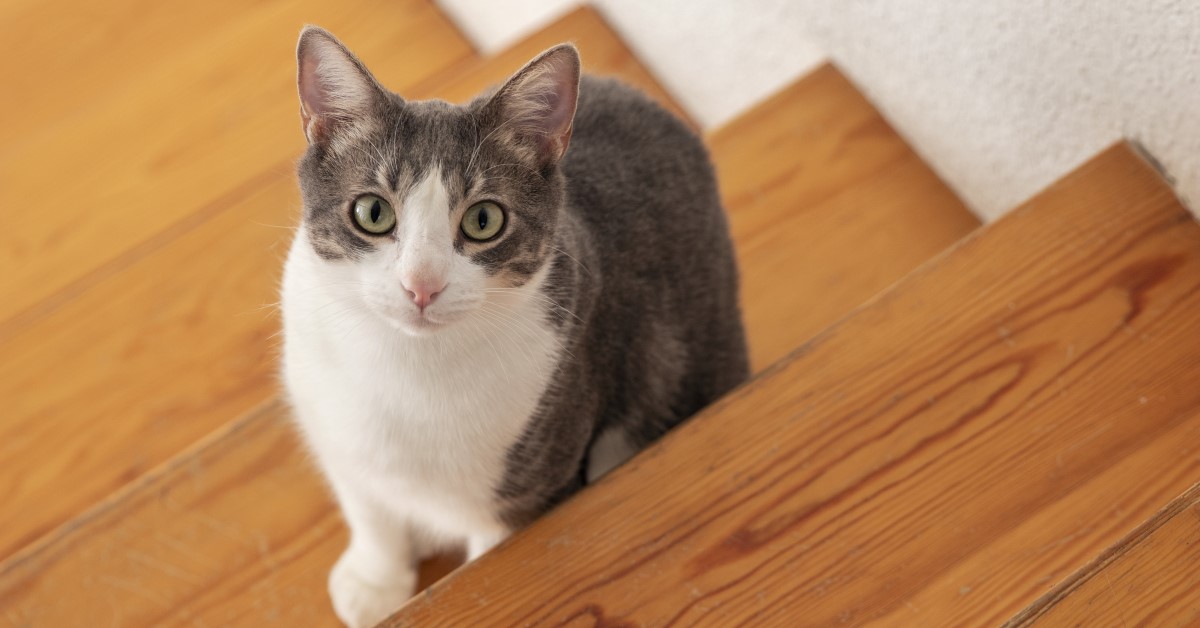Pain Relief for Cats with Arthritis
Over 45 percent of all cats and 90 percent of cats ten years of age and older suffer from feline arthritis. Here are some easy ways to recognize the signs of cat arthritis, as well as effective remedies for pain relief.

Feline arthritis, also known as degenerative joint disease in cats, is a lot more common than you might think. Nearly half of all cats have arthritis in one or more joints. The condition is nearly universal in older cats.
You might think that your cat is the exception to the rule. The reason many cat owners don't take measures to relieve feline arthritis is that they simply do not recognize the symptoms of arthritis in cats.
Symptoms of Cat Arthritis
Cats with arthritis don't usually limp the way people with arthritis do. They do not vocalize to announce their pain the way your dog might.
Instead, your arthritic cat will keep on doing the same things she always has, only more slowly or with less success.
For instance, a cat that has arthritis may need several tries to jump up on the counter. There may be more "accidents" if the entry to the litter box is too high. Your arthritic cat may show a lot more interest in taking naps than in playing with his toys. And your feline companion of many years may decide that getting petted and hugged is no longer a favorite activity.
Professor of Translational Pain Management Duncan Lascelles at the Veterinary School at North Carolina State University has developed a checklist for recognizing arthritis in cats.
- Can your cat jump to an elevated surface normally?
- Can your cat come down from an elevated surface normally?
- Does your cat go up and down stairs with ease?
- Does your cat chase moving objects, such as toys and prey?
- Has your cat stopped grooming all over (because of an inability to reach certain places)?
- Does your cat hide a lot?
- Is your cat uncharacteristically aggressive toward people and pets he does not know well?
If the answer to three or more of these questions is "yes," chances are that your cat has degenerative arthritis. Cats can have arthritis even if they are still active.
Cats instinctively conceal pain, even from their owners who love them. In nature, small animals like cats are prey for larger carnivores. They cannot advertise any vulnerability to attack. Even as pets, they protect themselves by concealing their pain.
Your vet can do a lot to treat arthritis in cats of all ages. We will touch on veterinary care for feline arthritis in a moment. But let's put prevention first.
How to Prevent Feline Arthritis
Preventing feline arthritis begins when your cat is a kitten.
Up to 20 percent of some breeds, including Himalayans, Persians, and Maine Coon cats, develop a condition called hip dysplasia when they are young. Hip dysplasia is a failure of the cartilage around the hip joint to hold the "ball and socket" at the hip joints in place. Cats with hip dysplasia usually have one leg that flops behind them or sticks out to the side. This condition usually progresses to painful arthritis as the cat gets older.
The key to preventing hip dysplasia is to make sure your kitten, especially if it is one of the three breeds mentioned above, never has to go up and down stairs or steps until about the age of 1. Carry your kittens, and let them go up and down a ramp.
The most important thing you can do to prevent feline arthritis in older cats is to make sure they maintain a healthy weight.
Fat cats tend to be arthritic cats. The extra weight resulting from obesity slowly wears down the lining around joints, so bone painfully rubs against bone.
You don't have to count calories to help your cat maintain or return to a healthy weight.
- Offer canned cat food instead of kibble.
- Avoid feeding your cat table scraps.
- Don't limit fat. Eliminate grains, which are not a natural food for cats.
Make sure your cat has opportunities for active playtime at least an hour a day.
Treatments and Pain Relief for Arthritis in Cats
The single most important cat arthritis treatment, one that will make your life easier, too, is to give your cat a walk-in litter box. Make sure your cat does not have to jump or climb to get in and out of the litter box. Your cat will suffer less pain and you will have less cleanup.
It also helps to elevate your cats' food and water bowls so they do not have to bend down to eat or drink. Give all of your cats their own food and water dishes so they will not jostle each other at mealtime.
Diet also makes a difference. Omega-3 essential fatty acids from fish produce inflammation-regulating hormones that relieve feline arthritis pain. Salmon is an excellent source of omega-3's. In nature, cats get glucosamine and chondroitin from insects. You can give your cat zebra-lipped mussel extract as a substitute.
Never give your cat pain relievers intended for humans. They can cause severe and fatal kidney and liver damage.
Innovations in Veterinary Care for Cat Arthritis
Treatments for arthritis pain in cats are extremely limited. Current veterinary guidelines, for example, permit vets to give cats a single dose of meloxicam in the cat's entire life, and only to confirm a diagnosis of feline arthritis.
However, a medication called Solensia (frunevetmab injection) has been available in the United States since 2022. It's the first medication that has been shown to relieve feline arthritis pain and improve the cat's quality of life.
Veterinary care for feline arthritis can get expensive. Learn how Pet Assure’s new pet wellness plan, Mint Wellness, can help by reducing the cost of annual checkups, routine bloodwork, and preventatives.
Ready to start saving money on pet wellness care?
Then take a look at Mint Wellness, the pet wellness plan that provides fast reimbursement on routine pet care. Save on vaccinations, wellness exams, preventatives, dental, and more!
Learn More


